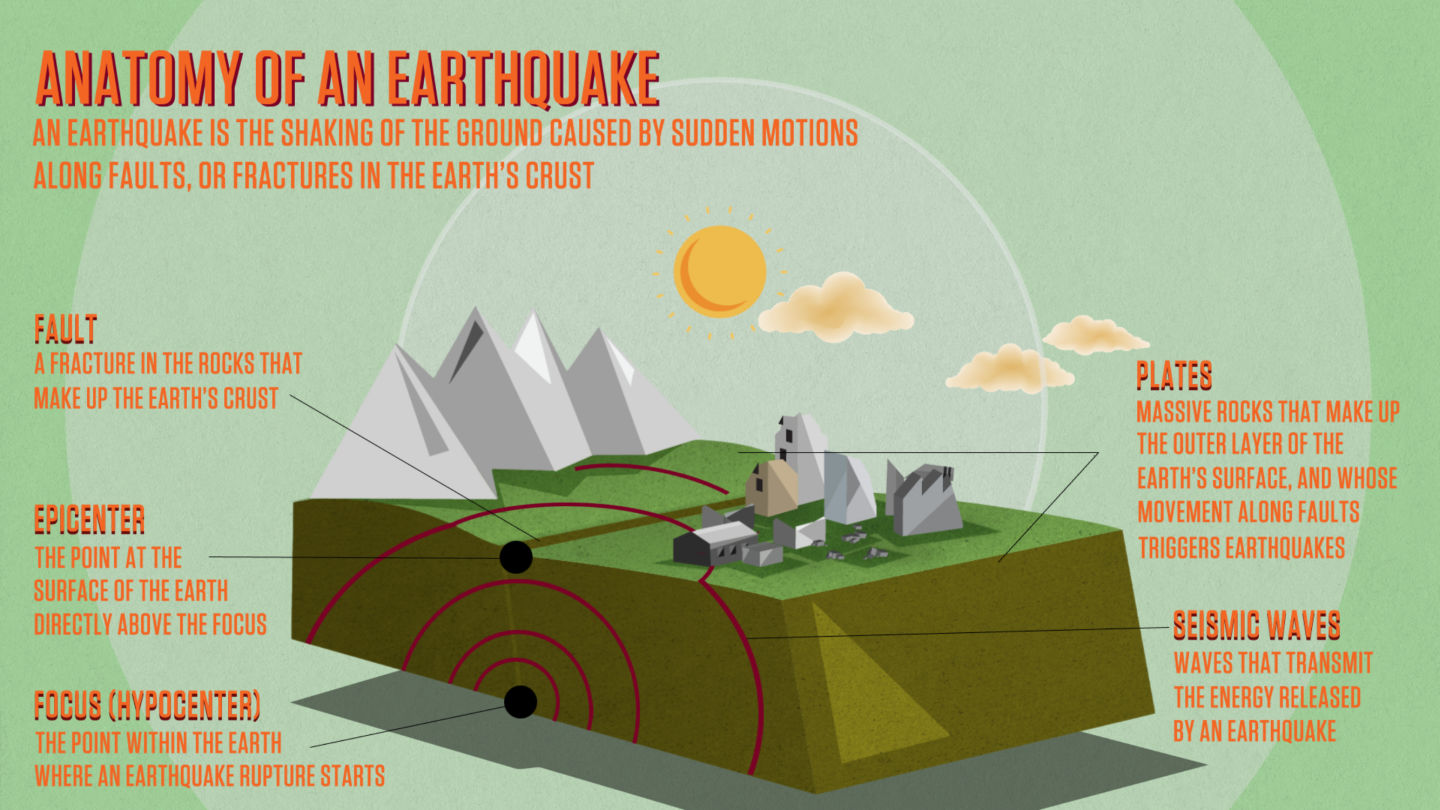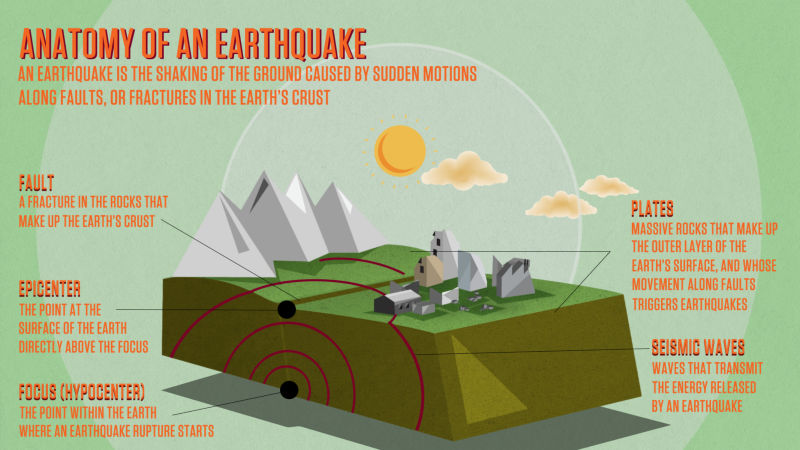Although the ground beneath us seems solid, it’s actually in constant motion. We usually don’t see it, but we can experience it through earthquakes.
Earth's crust is broken up into irregular pieces called tectonic plates. These large pieces of crust were formed by the combination of gravity and rising heat from Earth's core. There are seven major plates and many smaller ones, all moving in relation to each other. The lithosphere refers to the crust and upper mantle that make up these plates.
As tectonic plates move past each other along fault zones, they sometimes get stuck. Pressure builds, and when the plates finally give and slip, energy is released as seismic waves, causing the ground to shake. This is an earthquake.
The focus is the place inside Earth’s crust where an earthquake originates. The point on the Earth’s surface directly above the focus is the epicenter. When energy is released at the focus, seismic waves travel outward from that point in all directions. There are different types of seismic waves, each one traveling at varying speeds and motions. It's these waves that you feel during an earthquake.
Fault: A fracture in the rocks that make up the Earth’s crust
Epicenter: The point at the surface of the Earth above the focus
Plates: Massive rocks that make up the outer layer of the Earth’s surface and whose movement along faults triggers earthquakes
Seismic waves: Waves that transmit the energy released by an earthquake
Focus (Hypocenter): The point within the Earth where an earthquake rupture starts

This post is part of Exploring Earthquakes, a rich collection of resources co-presented by the California Academy of Sciences and KQED. This material is also available as a free iBooks textbook and iTunes U course.
